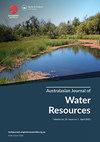封闭的学习系统?澳大拉西亚水景及其他地区的转型和回归潜力
IF 2.2
Q2 WATER RESOURCES
引用次数: 0
摘要
2022年7月19日,一场小规模的山洪打破了“红色预警”级别的热浪。水冲过沥青车道,比典型的城市运河更有活力。在外面凉爽潮湿的天气里,一种熟悉的气味弥漫开来。柴火?不要——森林大火的烟雾!当我们驱车穿过蜿蜒的沿海街道时,一层薄雾笼罩在植被上,遮蔽了那些屋顶为石板灰色的白房子。这是对近年来的一种诡异的提醒。到达海滨后,我们爬过花岗岩的露头,尽量不要在潮湿的岩石上滑倒,也不要惊动还在岩石池里洗澡的贻贝和贝。站在上升的水面上,我们可以看到烟雾笼罩着受保护的海湾里漂浮的船只。虽然风向很快就变了,海湾又恢复了它那美丽、清澈、略带痛苦的样子,但我无法摆脱对太阳花的那种感觉。这里是布列塔尼北部,而不是我们通过森林大火的烟雾所认识的多岩石的澳大利亚海岸线。对许多人来说,改变是一个破坏稳定的概念,就像想象未来一样。我特别幸运地与许多未来学家、探险家、科学家、演说家、领导者、建设者以及那些在复杂性中茁壮成长的人一起工作——这些人寻求理解并拥抱我们有责任创造的系统和未来。那些不只是分析信号或发出警报的人,而是积极主动地支持他人调整他们的世界观和行动,并创造性地设计和准备接下来会发生的不确定性。本文章由计算机程序翻译,如有差异,请以英文原文为准。
Locked-In learning systems? Transformation and regression potential in Australasia’s waterscapes and beyond
The ‘red-alert’ level heatwave was broken on the 19 of July 2022 with a small flash flood. Water rushed down the bitumen driveways with more vibrancy than a typical urban canal. In the cooler and humid aftermath outside, a familiar smell was present. A wood fire? No – bushfire smoke! As we drove through the winding coastal streets, a haze hung over the vegetation, obscuring the collections of white houses with their slate grey roofs. It was an eerie reminder of recent years past. Having arrived at the beachfront, we climbed over the granite outcrop, trying not to slip on the wet rocks or disturb the mussels and cockles still bathing in their rockpools. Perching above the rising water, we could then see the smoke shrouding the bobbing boats in the protected bay. Although the winds soon changed and the bay returned to its beautiful, clear and slightly tormented self, I could not shake that feeling of Solastagia. This was northern Brittany, not the rocky Australian coastlines we learnt to recognise through the smoke of our own bushfires. Change is a destabilising concept for many, just as imagining the future can be. I have been particularly fortunate to work with many futurists, explorers, scientists, raconteurs, leaders, builders and people who thrive on complexity – people who seek to make sense of, and embrace, the systems and futures we have responsibility for creating. Those who do not just analyse the signals or raise alarms, but proactively work to support others to adjust their worldviews and actions, and creatively design and prepare for the uncertainties of what comes next.
求助全文
通过发布文献求助,成功后即可免费获取论文全文。
去求助
来源期刊

Australasian Journal of Water Resources
WATER RESOURCES-
CiteScore
5.10
自引率
21.90%
发文量
25
期刊介绍:
The Australasian Journal of Water Resources ( AJWR) is a multi-disciplinary regional journal dedicated to scholarship, professional practice and discussion on water resources planning, management and policy. Its primary geographic focus is on Australia, New Zealand and the Pacific Islands. Papers from outside this region will also be welcomed if they contribute to an understanding of water resources issues in the region. Such contributions could be due to innovations applicable to the Australasian water community, or where clear linkages between studies in other parts of the world are linked to important issues or water planning, management, development and policy challenges in Australasia. These could include papers on global issues where Australasian impacts are clearly identified.
 求助内容:
求助内容: 应助结果提醒方式:
应助结果提醒方式:


